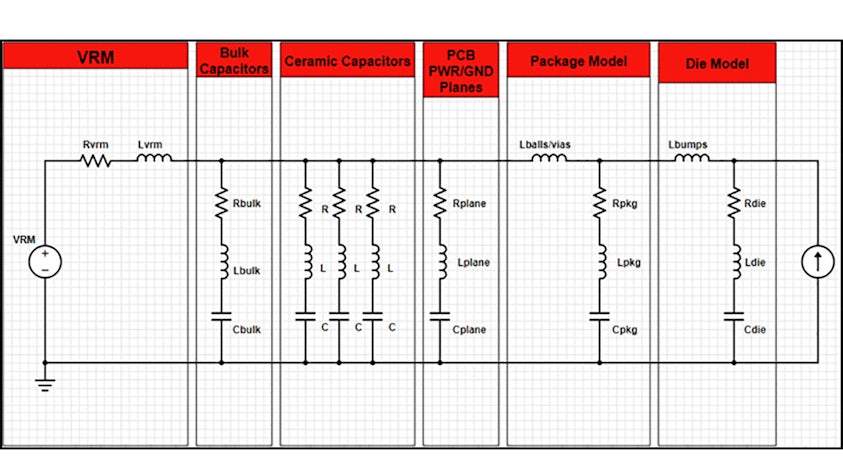A Power Distribution Network (PDN) on a PCB (Printed Circuit Board) is a complex network of traces, planes, and components responsible for distributing power to various components and integrated circuits on the board. Its primary purpose is to ensure that each component receives the appropriate and stable supply of electrical power, while minimizing voltage fluctuations and ensuring optimal performance and reliability of the electronic system. The PDN typically includes power planes, ground planes, power traces, decoupling capacitors, and other components that work together to manage and distribute electrical power throughout the PCB. Lastly, the PDN not only provides a means of delivering current to ICs on the board but also a return current path.
Our goal when analyzing a power distribution network is to determine the impedance of the network which will define the voltage variations that an IC will experience. A high performing PDN will show a low impedance throughout. In an alternating current (AC) context, the PDN must provide sufficient current to fast-switching IC’s while effectively managing voltage ripple and voltage drops. The rail voltage must be stable and within the voltage limit from DC all the way up to the bandwidth of the switching current for the IC which can be in the GHz range. When current load increases, an insufficient PDN can lead to issues like excessive voltage ripple, voltage drops, and VRM instability. This ripple on power supplies can cause operation issues or data integrity problems.





